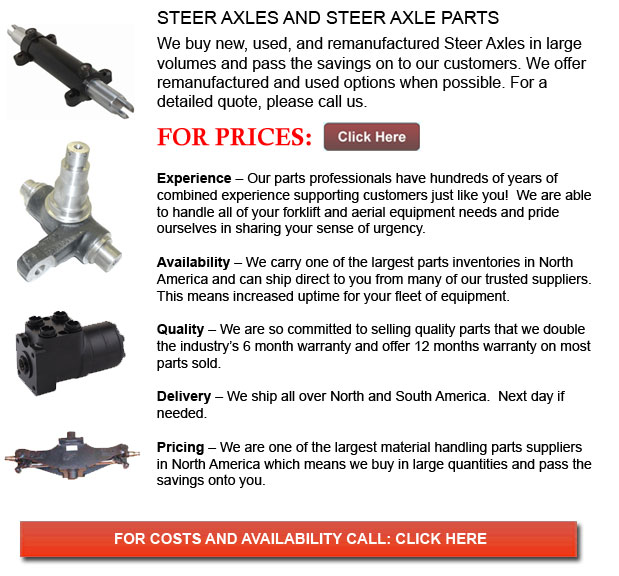
Steer Axles for Forklifts - The description of an axle is a central shaft intended for rotating a gear or a wheel. Where wheeled vehicles are concerned, the axle itself may be attached to the wheels and turn together with them. In this particular situation, bushings or bearings are provided at the mounting points where the axle is supported. Conversely, the axle may be fixed to its surroundings and the wheels could in turn turn around the axle. In this particular situation, a bearing or bushing is placed in the hole within the wheel in order to allow the gear or wheel to turn all-around the axle.
With cars and trucks, the word axle in several references is used casually. The term usually means shaft itself, a transverse pair of wheels or its housing. The shaft itself revolves together with the wheel. It is frequently bolted in fixed relation to it and referred to as an 'axle shaft' or an 'axle.' It is also true that the housing around it that is generally known as a casting is also known as an 'axle' or sometimes an 'axle housing.' An even broader sense of the term refers to every transverse pair of wheels, whether they are connected to one another or they are not. Hence, even transverse pairs of wheels within an independent suspension are generally referred to as 'an axle.'
In a wheeled motor vehicle, axles are an essential component. With a live-axle suspension system, the axles function in order to transmit driving torque to the wheel. The axles even maintain the position of the wheels relative to one another and to the vehicle body. In this particular system the axles must likewise be able to bear the weight of the motor vehicle plus whatever load. In a non-driving axle, as in the front beam axle in some two-wheel drive light vans and trucks and in heavy-duty trucks, there would be no shaft. The axle in this situation works only as a steering component and as suspension. A lot of front wheel drive cars consist of a solid rear beam axle.
There are other kinds of suspension systems wherein the axles operate just to transmit driving torque to the wheels. The angle and position of the wheel hubs is a function of the suspension system. This is usually found in the independent suspension seen in most new SUV's, on the front of many light trucks and on most brand new cars. These systems still consist of a differential but it does not have attached axle housing tubes. It can be attached to the motor vehicle body or frame or likewise can be integral in a transaxle. The axle shafts then transmit driving torque to the wheels. The shafts in an independent suspension system are like a full floating axle system as in they do not support the vehicle weight.
Last but not least, with regards to a motor vehicle, 'axle,' has a more vague definition. It means parallel wheels on opposing sides of the vehicle, regardless of their mechanical connection kind to one another and the motor vehicle body or frame.
![]() Click to Download the pdf
Click to Download the pdf
Forklift Parts
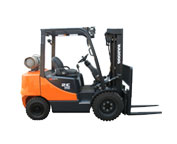
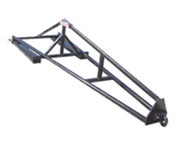
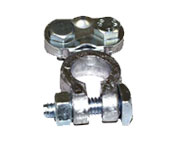
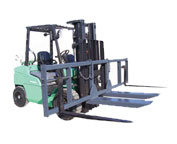
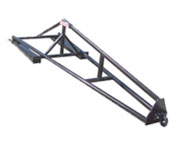
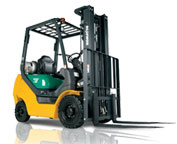
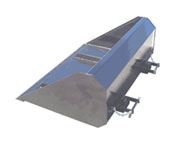
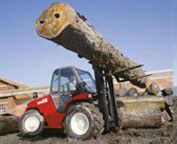
Lift Parts Express
TOLL FREE: 1-888-695-7994
LOCAL: (623) 900-4308
1753 E Broadway 101-496
Tempe, Arizona
forkliftpartstempe.com
Email Us
About Us


